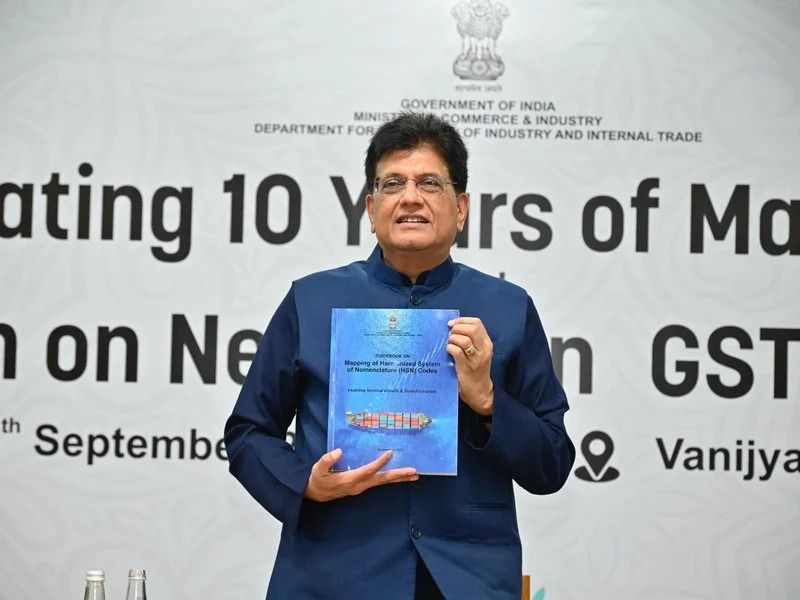New Delhi | September 23,2025 | SKY LINK TIMES
In a major step to streamline India’s industrial ecosystem, Union Commerce and Industry Minister Piyush Goyal released a HSN Codes Guidebook. The guidebook allocates 12,167 product codes across 31 ministries and departments of the Central Government, with each code assigned to a specific custodian ministry.

According to the Commerce Ministry, this initiative aims to promote industrial growth, trade facilitation, and investment promotion while enhancing ease of doing business in India. The launch coincided with the 10th anniversary of the Make in India initiative and discussions on Next Gen Reforms 2.0.
Table of Contents
Building a Stronger Manufacturing Ecosystem
The HSN guidebook is designed to serve as the foundation of a resilient and competitive manufacturing ecosystem. By mapping codes to ministries, the government ensures that each product sector has a clear regulatory custodian, streamlining processes and reducing ambiguities.
Officials said the guidebook will also strengthen India’s position in Trade Agreement negotiations, ensuring that commitments are aligned with national economic priorities and sectoral strengths.
Addressing Gaps in Classification
The Department for Promotion of Industry and Internal Trade (DPIIT) undertook extensive consultations to address the issue of unmapped or misclassified HSN codes. This process included:
1.Conducting value-chain and use-case analyses for each code.
2.Reviewing Allocation of Business rules.
3.Holding 300+ one-on-one meetings with ministries and departments.
4.Engaging in stakeholder consultations with industry representatives.
These steps ensured that product codes were allocated based on a data-driven and sector-specific approach.
Also Read:https://skylinktimes.in/gst-2-0-boosts-textiles-logistics-with-tax-cuts/
Three Pillars of the HSN Codes Guidebook
A dedicated section titled “How to Use the HSN Codes Guidebook?” helps stakeholders navigate the new system. The guidebook is built on three operational pillars:
1. Manufacture in India – Aligning policies, strengthening value chains, and enhancing workforce skills.
2. Strengthen Brand India – Promoting Indian products globally through quality and reliability.
3. Make for the World – Expanding India’s footprint in global manufacturing and exports.
Manufacturing Sector on the Rise
India’s manufacturing sector has shown robust growth, with Gross Value Added (GVA) rising by 11.89% in FY 2023–24, up from 7.3% in the previous year, according to the Annual Survey of Industries (ASI).
Experts say the structured allocation of HSN codes will further support this momentum by removing bottlenecks, simplifying compliance, and boosting investor confidence.
For More Info Stay Tuned: https://skylinktimes.in



